Today the Chung Kai camp area is the third and smallest of the CWGC cemeteries. This camp was originally occupied by mainly British POWs who worked the adjacent railway segment and made the two cuttings at Khao Poom. Later it became a major ‘hospital’ camp and the majority of the graves there are of those who died in that hospital. The US POWs spent a small part of their post-TBR time there as well in 1945.



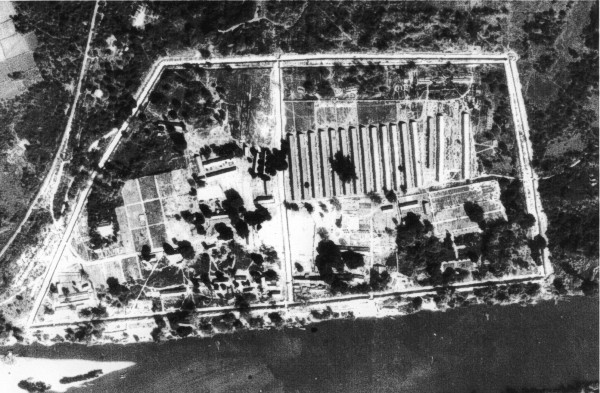

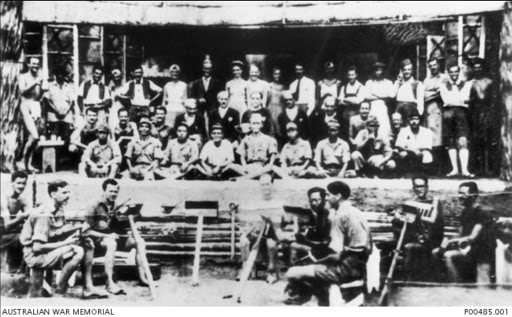

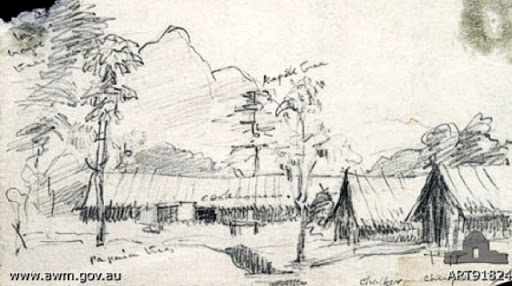



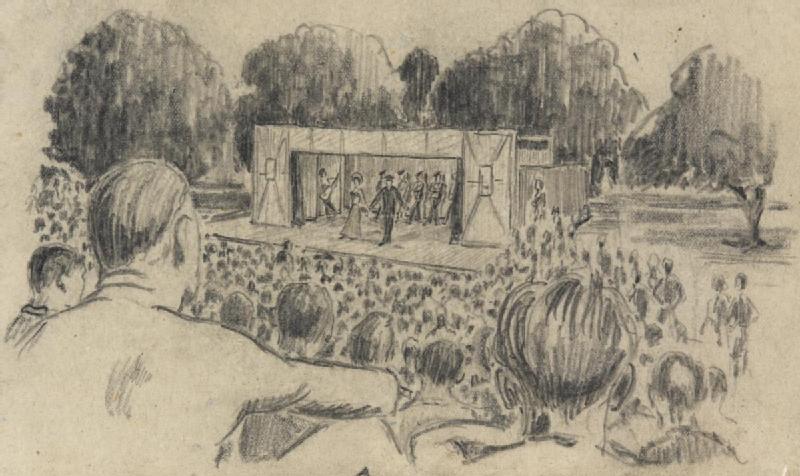

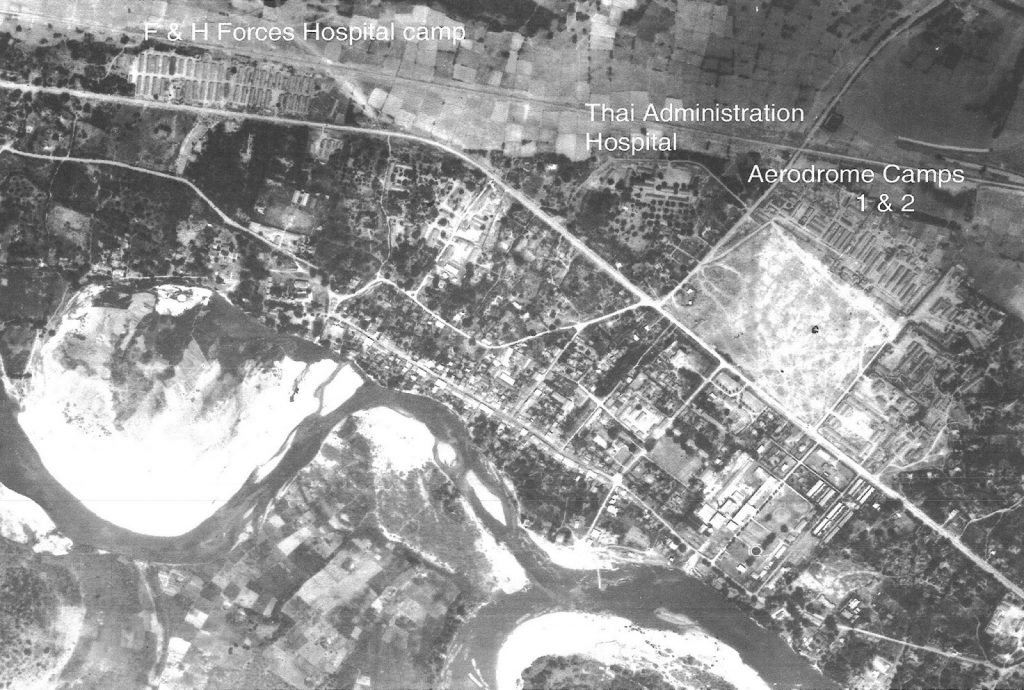
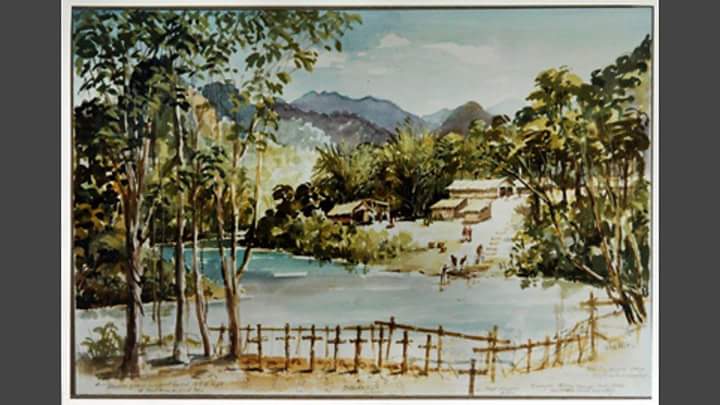

17e2 Multiple iterations
Modern day tourists who visit the CWGC cemetery at ChungKai rarely have an appreciation for the true history of this site. We are fortunate to have a period (if undated) aerial recon photo which, when paired with a postwar hand-drawn diagram provides a wealth of information about this site. First, it was much larger than is easily appreciated. By overlaying the photo on the current terrain, we can get a better appreciation for the size and layout of the camp.
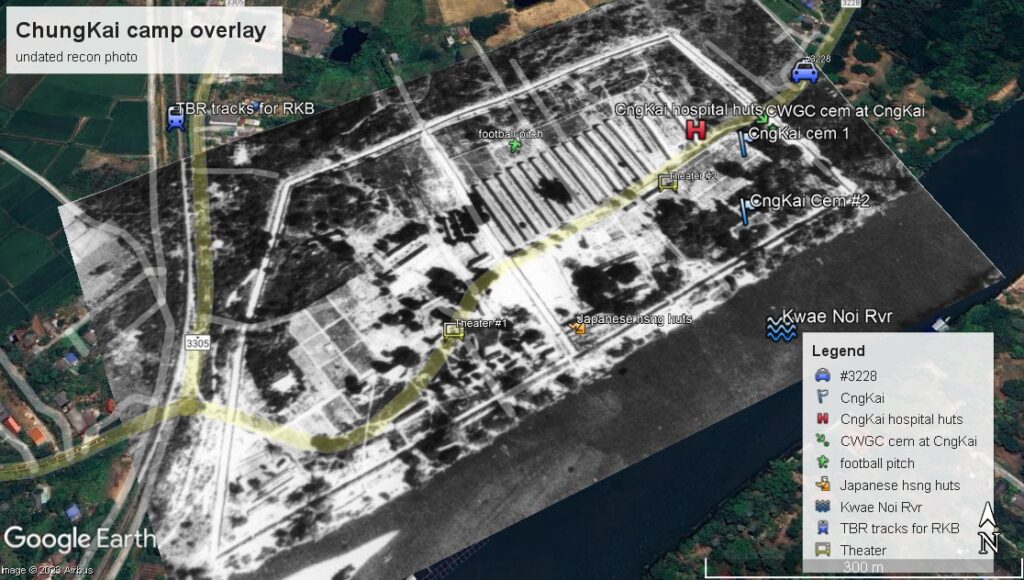
This was the first true POW work camp. It was preceded by NongPlaDuk and ThaMaKam, but they were not typical work camps. I have described ChungKai as a microcosm of the entire TBR. Although it is not well documented, it is almost certain that the mainly British POWs (many of them officers) laid the track from ThaMaKam. They then were required to build a 10m high berm where the trace meets the river bank. This brought them to the first of two limestone outcroppings that had to be cut through. About 100m meters beyond that was the second cutting. Then a medium-sized bridge over a ravine; still known today as the “officers Bridge”. Tracks, fill, cuttings and bridges, that is what the TBR consisted of. All are found here at ChungKai.
While all this work was going on and the two bridges were being built, men and supplies were being ferried up the Kwae Noi River and a series of camps were established. Over the next 70Kms there were at least 9 camps. All of them were designed to be temporary. As work was completed in that sector, the POWs would be leapfrogged farther along the trace. The next major obstacle was the huge mountain at WangPo. Between them the trace was generally flat and unobstructed. All things considered, the POWs who worked these 70 kilometers of the TBR had a relatively easy time. They were close to the support base at Kanchanaburi City. There were not so many of them as to be a burden to the system. These camps were close to the river. During these early (pre-speedo) days of construction, barely 200 men perished. Dysentery was one of the leading causes of death, but no other single cause dominates.
But as work was completed and the men were scheduled to move, the Japanese encountered an unexpected problem. A significant portion of them were unfit for work. There was no reason to move them to a new work site. So they were placed on barges and moved downstream to the ChungKai camp. In this manner, ChungKai became the first ‘hospital’ camp; quite unintentionally. There was never an intention to provide anything that even resembled medical care. Rather than being ‘hospitalized’ these men were being warehoused. They were useless to the project and so were left to die. It was only through the extraordinary efforts of the Allied medical personnel that only 200 died!
Over the course of the TBR build time, thousands of POWs found their way to ChungKai. About 90% of the POWs buried in the CWGC (1688) cemetery, died at that hospital (1496). For some unexplained reason, the 120 Australian POWs who were initially buried there were moved to Don Rak so that there are no AUS graves at ChungKai today.
As per the period recon photo, the current CWGC cemetery is in the precise location of larger of the two period cemeteries. Apparently the graves closest to the river (marked as cemetery #2) were move due to the threat of annual flooding.
There are also indications, from survivor accounts, that ChungKai went through other iterations. In early 1944, as the POWs who had been in the camps that had experienced cholera outbreaks, were finally being consolidated to camps at Kanchanaburi City, ChungKai served as a quarantine center. The last thing the IJA wanted to do was introduce cholera into those ‘rest’ camps. So POWs were seemingly held there until the guards were confident that there was no cholera remaining. Seemingly, as final precaution, the ChungKai hospital huts were burned. Immediately post-war, men returned there to retrieve diaries and other items that had been buried for fear of confiscation. They describe the utter destruction of the area. Fortunately, the cemeteries remained intact. In the interim period, a few survivors describe being moved from ThaMaKam back to ChungKai, following the errant bombs that fell there in DEC 1944.
=========================
George Holland Oral Hx audio = medic at ChungKai
https://www.iwm.org.uk/collections/item/object/80032104
Henry Owtram at ChungKai:
